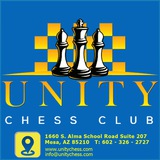21…♕c8 22.♕f6 ♘ac6 23.♘d5 ♘xd5 24.♖xd5 ♖g7 25.♖xg5 ♕d7 26.♖xg7+ ♕xg7 27.♕e6+ ♔h8 28.♗h4 ♘d4 29.♕h3 ♔g8 30.♗f6 ♖f8 31.e5 ♘e2+ 32.♔h1 ♗e4 33.♖f2 1-0
With opposite-castled kings, Black opens up the b-file for his rook, and tries to obtain a strong square for his knight on d5 as well.
If White wants to keep control of d5 with 17.b3, his king’s position will be much more open after 17…bxc4 18.bxc4 ♖b8. The text move is not so useful either. Not only does it help Black’s development, but the exchange of the light-squared bishops also facilitates Black’s control of the d5-square.
White’s c-pawn is in trouble, while Black’s knight will be beautifully centralized on the untouchable d5-square. This rapid game saw some further adventures, and Black eventually won: …0-1 (63).
Reaching for the hook on h3! Black has not castled yet, and now he starts an attack on White’s king as quickly as possible, intending to open a file for the h8-rook.
17.♕f3 was about the only move to prevent …g5-g4, followed by …h4-h3. But after 17…♖g8, White can hardly stop …g5- g4 anyway.
19.♗e3 ♘xg4 20.fxg3 hxg3+ 21.♔g1 ♘xe3 22.♖f2 ♘f5 23.exf5 gxf2+ 24.♕xf2 ♗xf2+ 25.♔xf2 …0-1 (49)
If all the pieces were to be exchanged, the pawn ending would be winning for White. However, 20.♖xc8 ♖xc8 would clearly be a premature start, granting Black the only open file. Thus, Capablanca used the Karpov stratagem (again, an anachronism, of course!) to gain time for doubling his rooks on the c-file.
